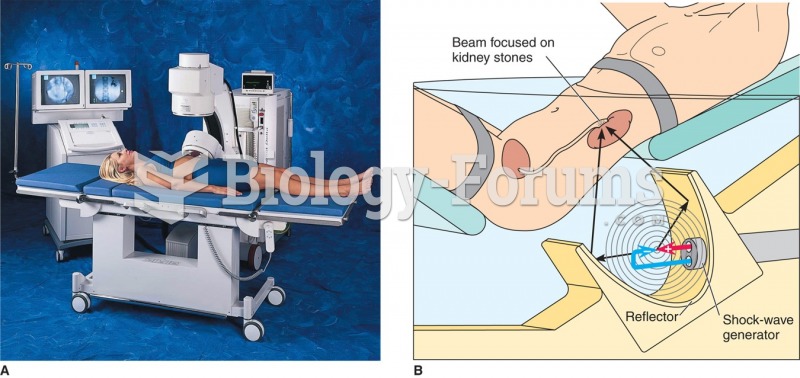|
|
|
Children of people with alcoholism are more inclined to drink alcohol or use hard drugs. In fact, they are 400 times more likely to use hard drugs than those who do not have a family history of alcohol addiction.
Common abbreviations that cause medication errors include U (unit), mg (milligram), QD (every day), SC (subcutaneous), TIW (three times per week), D/C (discharge or discontinue), HS (at bedtime or "hours of sleep"), cc (cubic centimeters), and AU (each ear).
The longest a person has survived after a heart transplant is 24 years.
Drying your hands with a paper towel will reduce the bacterial count on your hands by 45–60%.
About 80% of major fungal systemic infections are due to Candida albicans. Another form, Candida peritonitis, occurs most often in postoperative patients. A rare disease, Candida meningitis, may follow leukemia, kidney transplant, other immunosuppressed factors, or when suffering from Candida septicemia.
 The role of Hox genes 9–13 in specifying limb formation from the proximal to distal
The role of Hox genes 9–13 in specifying limb formation from the proximal to distal
 A typical 1/2 inch drive air impact wrench. The direction of rotation can be changed to loosen or ...
A typical 1/2 inch drive air impact wrench. The direction of rotation can be changed to loosen or ...
 Extracorporeal shock-wave lithotripsy. Acoustic shock waves generated by the shock-wave generator ...
Extracorporeal shock-wave lithotripsy. Acoustic shock waves generated by the shock-wave generator ...
 Stretching the flexors of the foot in plantarflexion, recipient prone. Lower leg perpendicular to ...
Stretching the flexors of the foot in plantarflexion, recipient prone. Lower leg perpendicular to ...



